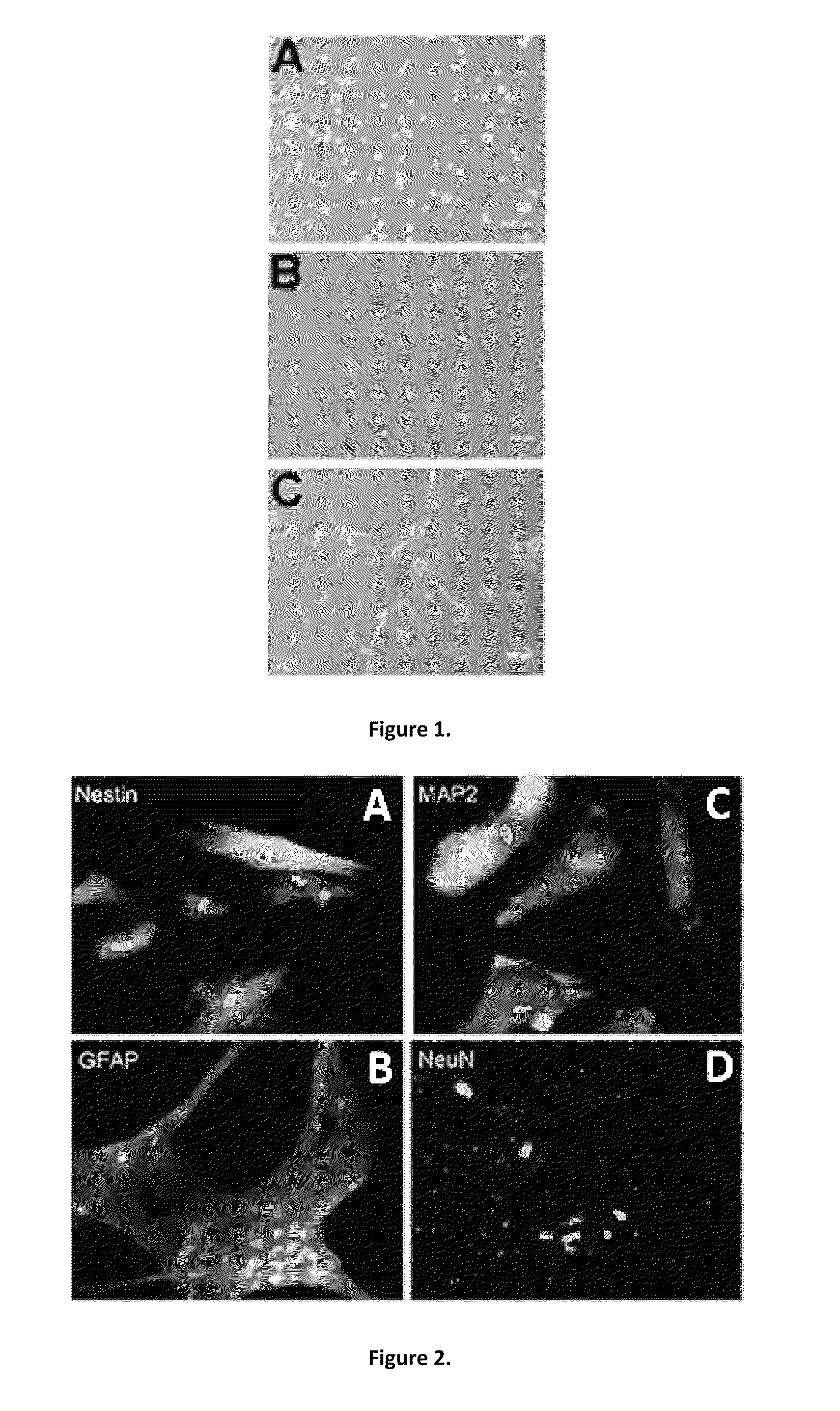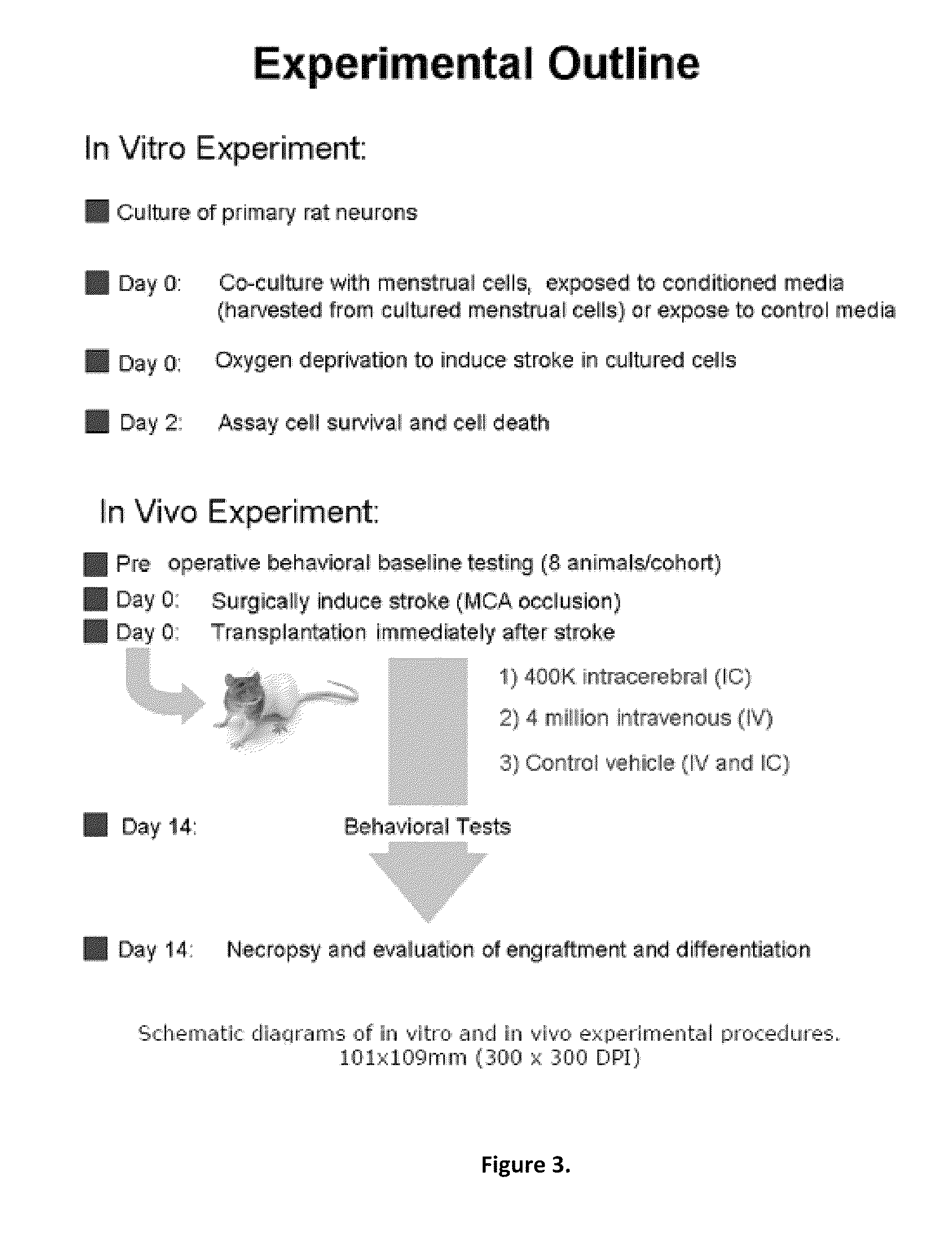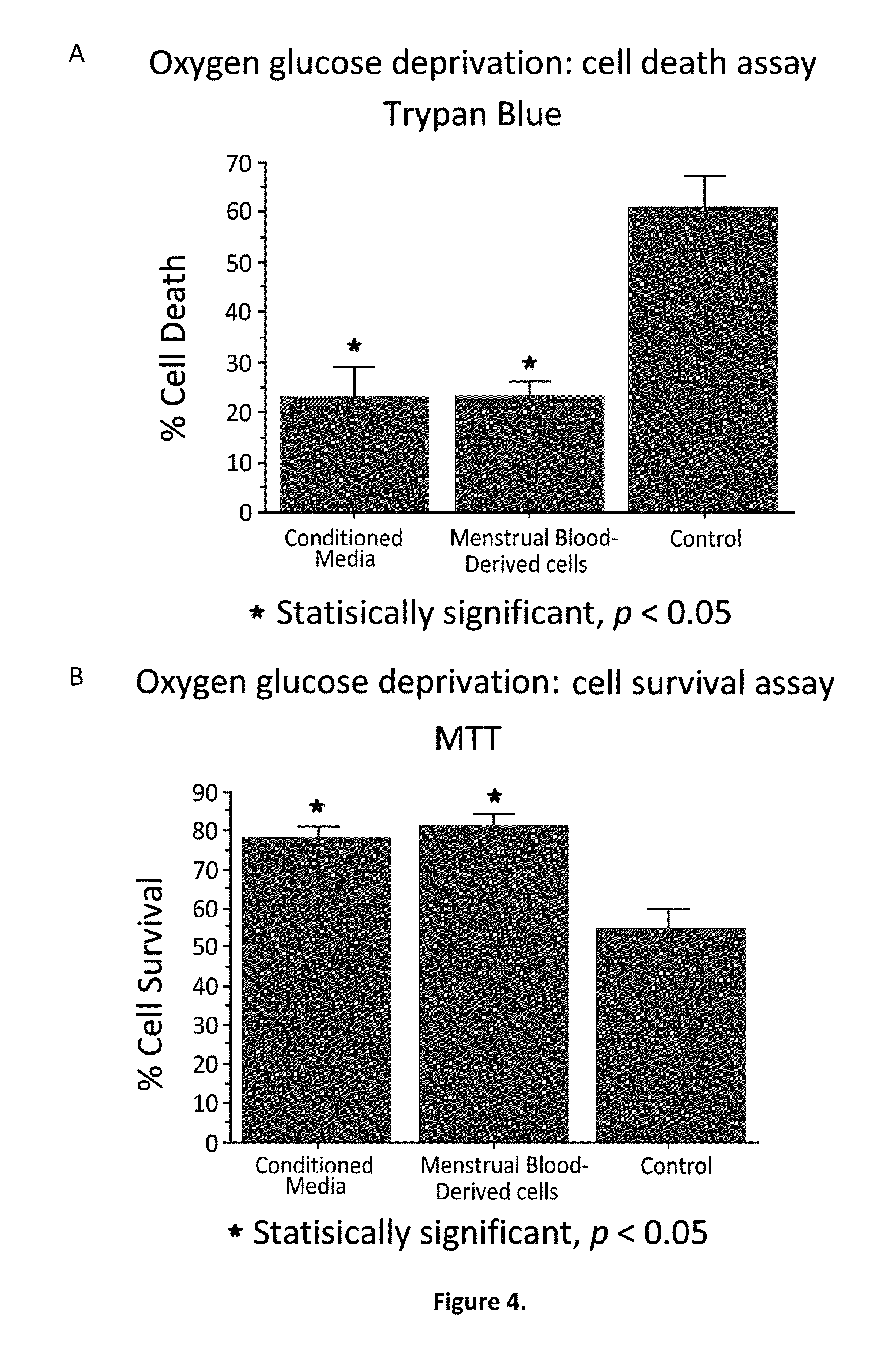Methods of treating stroke using stem cell-like menstrual blood cells
a stem cell and menstrual blood cell technology, applied in the field of neurodegenerative and stroke therapy, can solve the problems of limited efficacy limited utility of adult stem cells, slow growth and loss of pluripotency, etc., and achieve routine and safe isolation, high proliferative capacity, and maintain differentiation potency
- Summary
- Abstract
- Description
- Claims
- Application Information
AI Technical Summary
Benefits of technology
Problems solved by technology
Method used
Image
Examples
example 1
In Vitro Use of Menstrual Blood Stem Cells in Stroke Models
[0043]Primary cultures of neurons were derived from the rat (Sprague-Dawley) striatum and maintained in culture following the supplier's protocol (CAMBREX, MD). Briefly, immediately after thawing, cells (4×104 cells / well) were seeded and grown in 96-well plate coated by poly-1 lysine in Neurobasal media (GIBCO, CA) containing 2 mM L-glutamine, 2% B27 (GIBCO, CA) and 50 U / ml penicillin and streptomycin for 7-10 days at 37° C. in humidified atmosphere containing 5% CO2. Purity of the cells were immunocytochemically determined to be >99% for neuronal cell population as revealed by DARPP-32 immunostaining. Moreover, these cells were appropriate for the oxygen glucose deprivation (OGD) injury model, where glutamate excitotoxicity plays an important role, as revealed by expression of glutamate receptors (determined immunocytochemically using vesicular glutamate transporter-1) in 50% of the neuronal and astrocytic cell population.
[...
example 2
In Vivo Analysis of Menstrual Blood-Derived Cell Treatment
[0054]Transient unilateral focal ischemia was produced using a well-established middle cerebral artery occlusion (MCAO) using the intraluminal suture model as previously described (Borlongan, et al. (1998) Transplantation of cryopreserved human embryonal carcinoma-derived neurons (NT2N cells) promotes functional recovery in ischemic rats. Exp Neurol 149:310-321; Borlongan, et al. (2000) Glial cell survival is enhanced during melatonin-induced neuroprotection against cerebral ischemia. FASEB J 14:1307-1317). Male Sprague-Dawley rats weighing about 250 g were anesthetized with gas inhalation composed of 30% oxygen (0.3 L / min) and 70% nitrous oxide (0.7 L / min) mixture. The gas was passed through an isoflurane vaporizer set to deliver 3% to 4% isoflurane during initial induction and 1.5% to 2% during surgery. Physiological parameters, via blood gases assays, and ischemia and reperfusion levels determined by laser Doppler measurem...
PUM
| Property | Measurement | Unit |
|---|---|---|
| total volume | aaaaa | aaaaa |
| total volume | aaaaa | aaaaa |
| total volume | aaaaa | aaaaa |
Abstract
Description
Claims
Application Information
 Login to View More
Login to View More - R&D
- Intellectual Property
- Life Sciences
- Materials
- Tech Scout
- Unparalleled Data Quality
- Higher Quality Content
- 60% Fewer Hallucinations
Browse by: Latest US Patents, China's latest patents, Technical Efficacy Thesaurus, Application Domain, Technology Topic, Popular Technical Reports.
© 2025 PatSnap. All rights reserved.Legal|Privacy policy|Modern Slavery Act Transparency Statement|Sitemap|About US| Contact US: help@patsnap.com



